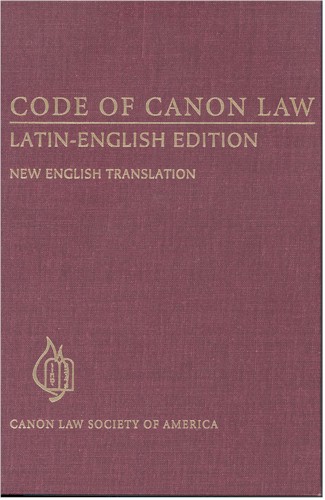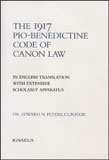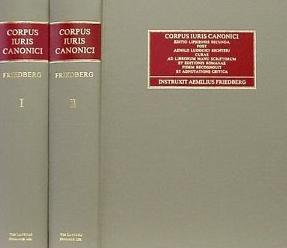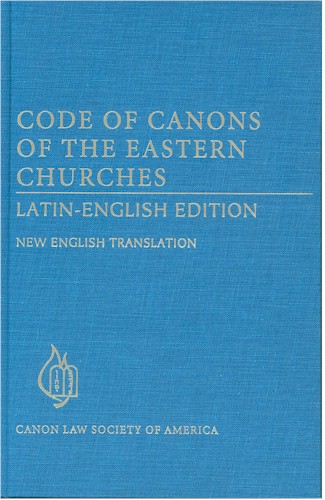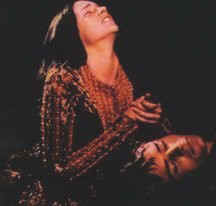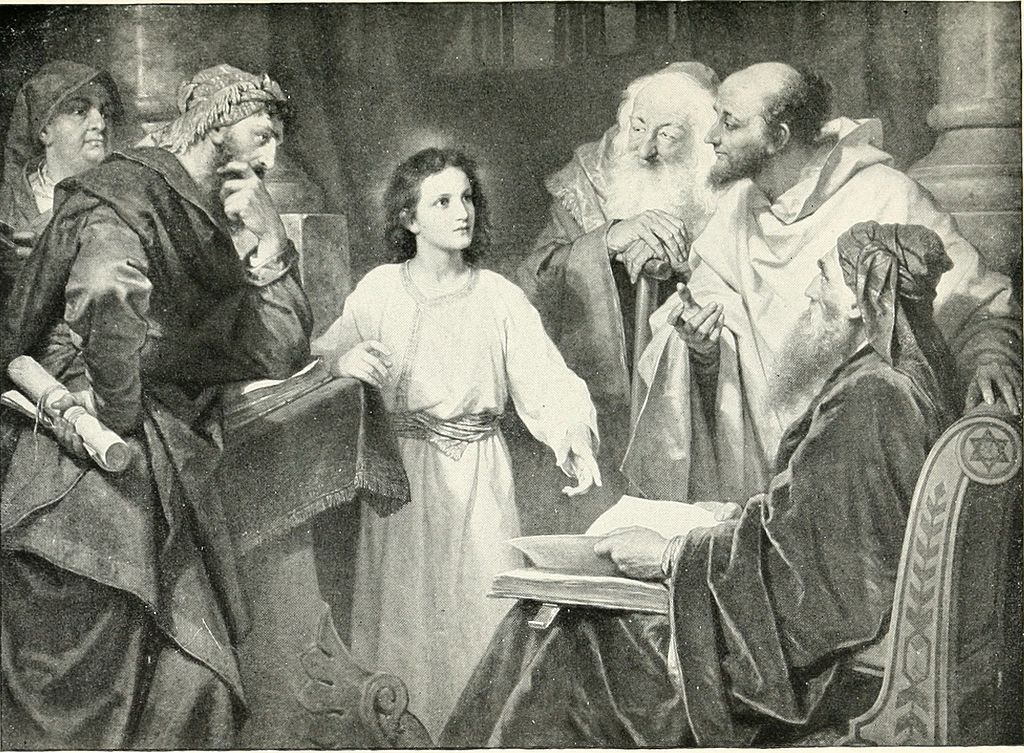|
To work for the proper implementation of canon law is to play an extraordinarily constructive role in continuing the redemptive mission of Christ. Pope John Paul II |
|
26 may 2020 |
Research links
|
Related |
|
Overview
|
Too young to marry
from: Edward Peters, "Too young to marry", America (22-29 Jun 1996) 14-16.
|
|
Article |
New annulment petitions are
assigned by our judicial vicar to the tribunal judges on the first day of the
month. Retrieving mine from the shelf, I know before cracking a file that at least one-fourth of my cases will involve a
teenage petitioner or respondent. In many months that percentage will exceed
one-third, and in a significant number of all cases both the petitioner and
respondent will have been teenagers at the time of their wedding. That teenage
marriages are markedly prone to failure is not surprising. That modern canon law
still considers a 14-year-old ready for marriage is.
Until
1917, canon law had basically considered anyone above the age of 12 capable of
marriage. Thus, when the 1917 Code raised the minimum age for marriage in the
church to 14 for girls and 16 for boys (1917 CIC 1067), the change was greeted as an improvement
that recognized that something beyond mere reproductive ability was required for
Christian marriage.
The
idea of children hardly into their adolescent years being allowed to marry is a
little embarrassing, and canonists queried on the topic usually reply that very
few 14-year-olds get married anymore. Canon law, we add, was meant to apply in a
wide variety of cultures, including those in which 14-year-olds marry happily
(just where that land is we leave to anthropologists to determine), and in any case,
we note, boys cannot marry until they are 16. Obviously, not all questioners
are satisfied with these replies.
In
the face of continuing criticisms of canonical approbation for teenage weddings,
canonists will next cite Canon 1071 and, with somewhat less rubescence, point
out that it requires approval of the "local ordinary" for weddings
"which cannot be celebrated or recognized in accord with the norm of civil
law." Presumably some teenage weddings fall under this heading. Moreover,
when the parents of minors are either unaware of their children's nuptial plans
or are reasonably opposed to them, Canon 1071 calls for consultation with the
ordinary. But for several reasons, Canon 1071 represents only a narrowing of the
channel through which failed teenage manages continue to flow.
First,
canonical training for pastoral ministers is not what it used to be, and Canon
1071 is sometimes simply overlooked by priests and deacons ignorant of its
existence. Second, a surprisingly long list of diocesan personnel qualify as
"local ordinaries" for purposes of consultation (Canon 134), a fact
that can facilitate inconsistent approaches toward teenage marriages within the
same local church, approaches that might not even be those of the diocesan
bishop.
Third, beyond the dubious implication that parents' opposition to their children's teenage wedding plans could be deemed by ministers as un-reasonable, hence exempting those ministers from any consultation requirement, there is still no parental consultation requirement even in cases where parental opposition is considered reasonable. Fourth, 18- and 19-year-olds, still teenagers and still prone to failed marriages, are not covered by the terms of Canon 1071 because they are not canonically considered "minors" (Canon 97). For all of these reasons, Canon 1071 is not much of a deterrent to teenage weddings.
Finally, if we church lawyers
are particularly hard pressed by challenges to the canons on teenage weddings,
we occasionally point the finger at parishes, since, after all, "pastors
are to take care that youths are prevented from celebrating marriages before the
age at which marriage is usually celebrated in accord with the accepted practice
of the region" (Canon 1072). Such an attitude, of course, does little to
cool the feud between tribunal personnel and parochial ministers that simmers in
some places.
The Front Lines
As a practical matter, many factors blunt the effectiveness of Canon 1072 in pastoral life. Among these factors, I think, are Rome's restriction of prohibitory powers over weddings to diocesan bishops (who, in some places, have tried to curb teenage weddings on their own) and its reservation of invalidating authority over marriage to itself (Canons 1075 and 1077). Such limitations usually leave parish-based ministers, who perform nearly all church weddings, with little practical support in their efforts against juvenile marriages. Certainly there are priests and deacons whose participation in certain teenage weddings is, even under current canon law, open to serious criticism, but it is only fair to say that most teenage weddings cannot, under the current discipline, be stopped no matter how serious are the misgivings of the official witness.
The one thing we canon lawyers cannot explain, though, when confronted about the rules for teenage weddings, is why the National Conference of Catholic Bishops, has not used its authority under Canon 1083 to raise the age for licit marriage in an effort to stem the stream of doomed teenage marriages. The authority of the episcopal conference to take such action is unquestionable, and it represents a significant improvement in the 1983 Code over the discipline of the 1917 Code.
The change came about thus. During
the lengthy canonical reform process following Vatican II, a proposal to raise
the minimum ages for Catholic marriage was considered. While some argued that
super-mature 14- or 16-year-olds might be hurt by raising the canonical ages for
valid age, many others argued that legions of immature 14- through 19-year-olds
were being lulled into thinking that canonical age was an adequate measure of
their matrimonial capacity.
Compromise and Pitfalls
In the end, a compromise was struck. Universal law retained 14 and 16 as the ages for valid marriages of girls and boys. But by adding a second provision to what became Canon 1083, Rome authorized episcopal conferences to recognize the concrete circumstances of marriage in their own territories and to raise the ages for licit marriages within a given nation. Although many episcopal conferences (including Canada, Spain, Switzerland, the Philippines, England and Wales, Poland, China, Gambia, Liberia and Sierra Leone) have taken action under Canon 1083 § 2, to raise the minimum ages for licit marriage, our USCCB is not among them. Rather than speculate on why no action has yet been taken on this matter, perhaps our attention would be better focused on what could be done now. Two approaches seem possible.
The first is simply to raise the minimum age for licit marriage in the United States to 18 for both males and females. This would send a clear message that early teenage weddings are strongly discouraged. It would remove from parochial and diocesan ministers the immediate pastoral burden of having to explain on a case-by-case basis the many pitfalls of teenage marriages to people who are generally ill-disposed to hear objections in the first place.
Such a matrimonial policy would not conflict with any other provisions in canon law, and, in virtue of Canon 88, its restrictions could be dispensed in individual circumstances (though one would hope that dispensations would be rare.) Finally, raising the minimum ages for licit marriage would eventually result in a reduction of tribunal case loads because the delays required by such policy would facilitate the cooling of passions (not necessarily sexual ones) which currently lead to so many rushed teen-age weddings and failed adolescent marriages.
The second approach is perhaps
more challenging, but it offers, I think, greater potential benefit: Raise the
licit age for marriage in the United States to 19 or even 20. Eighteen, 19-,
even 20-year-olds, especially when they attempt marriage with those the same
age, usually do not possess the maturing experience of life that parents,
certainly, want to see in their children before marrying. Without necessarily
challenging the canonical capacity of such persons to many, experience and
common sense point to the aggravated failure rate among those who marry even in
their late teenage years, and suggest the appropriateness of refusing to permit
such weddings, at least without a well-considered dispensation.
Assuming
Burdens
There are some obstacles to a supra-majority age restrictions on marriage, and these deserve consideration. For example, Canons 97 and 98 combine to declare that those aged 18 and above enjoy the full use of their canonical rights, including, presumably, the right to marry. But is this obstacle to a supra-majority age for licit marriage as compelling as one might at first think? More specifically, might canon law offer any other examples of post-majority age restrictions, including some in specifically sacramental and vocational contexts? The answer is yes.
The transitional
diaconate, for
example, may not be conferred until age 23, and presbyteral ordination is
delayed until age 25 (Canon 1031). Both of these ages are well past civil and
canonical majority and are required as a precaution against the immature
assuming burdens they are not yet able to handle. Turning to consecrated life,
although temporary profession could be made at age 18 (at the very earliest),
permanent profession cannot be undertaken until at least age 21 (Canons 656 and
658). Considering that there is no such thing as "temporary marriage,"
the higher age requirement in religious life seems more relevant to our
discussion of marriage.
Natural
Rights and Teaching Moments
It might be argued that, while there is a natural right to marry, there is no natural right to ordination or to religious profession, and to the degree that this is true, this might permit ordination and profession age requirements to be higher than those that can be imposed for marriage. But in many other ways, the natural right to marriage has been curtailed by various ecclesiastical regulations. Generally these restrictions on marriage have been imposed with the intention of protecting people from making serious mistakes in entering marriage. And surely teenage weddings are one of the most consistent, and preventable, mistakes made in marriage today.
The prohibition against mixed marriage found in Canon 1124 is one such example of a restriction on the right to marry. Under pain of illiceity Catholics are forbidden to marry baptized non-Catholics without express permission. True, such dispensations are commonly granted, but there is still a value to requiring those considering interdenominational weddings to explore seriously the implications of such marriages. The requirement of special permission itself serves a teaching function and the process of dispensation provides a structured teaching moment for those considering such an important step.
As a tribunal judge, I see far more cases of marital failure linked to age-based immaturity at the time of contract than I see cases of divorce based on denominational differences at the time of the wedding. To the degree that other tribunal judges and pastoral ministers share that observation—and I think most do—considerable support for raising the licit age for marriage in the United States at least to 18 seems at hand. I personally think that serious consideration should be given to raising the minimum age for licit canonical marriage in the United States to 20 for both men and women. In the meantime, the immediate good that can be accomplished even by raising it to 18 for both sexes seems sufficient to warrant such action being taken by the USCCB at the earliest possible opportunity.
|
|
Materials on this website represent the opinions of Dr. Edward Peters and are offered in accord with Canon 212 § 3. This website undergoes continual refinement and development. No warranty of completeness or correctness is made. Dr. Peters' views are not necessarily shared by others in the field nor are they intended as canonical or civil advice.
CanonLaw.info Homepage & Site Directory / Help support CanonLaw.info / Original Materials © Edward N. Peters |
